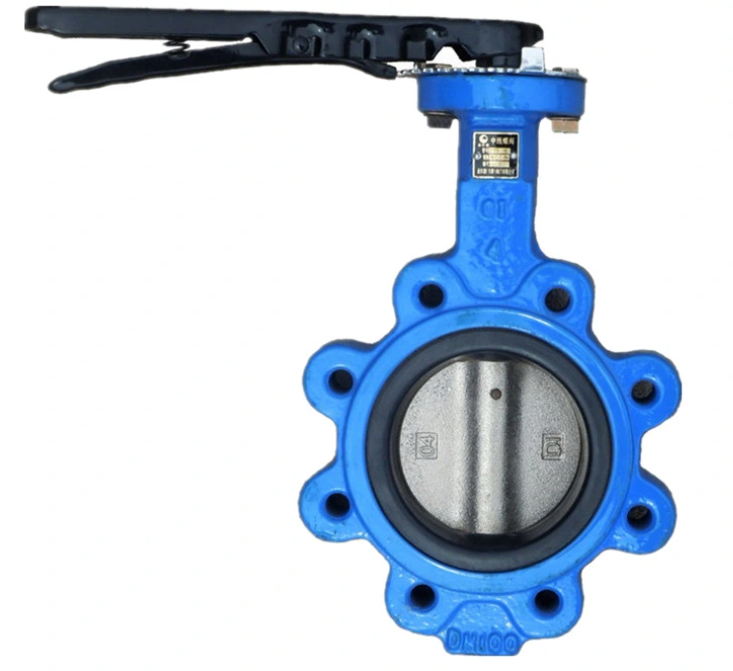Both pneumatic actuator butterfly valves and electric pneumatic butterfly valves present distinct benefits concerning control, velocity, and cost-effectiveness. Pneumatic variants, renowned for their automated actuation, are extensively employed across diverse industries. Conversely, electric actuators afford meticulous control tailored to particular applications.

Pneumatic Actuator Butterfly Valves
Pneumatic butterfly valves are essential components in various industrial applications where precise fluid flow control is crucial. Here’s what you need to know:
Working Principle:
A pneumatic butterfly valve comprises a central disc nestled between a stem and a pipe. The stem links to a pneumatic actuator powered by compressed air, propelling either a diaphragm or piston. By rotating the stem 90 degrees, the actuator positions the disc parallel to the fluid flow, facilitating seamless passage through the valve. Rotating the stem partially enables proportional or throttled flow, making these valves suitable for modulating services.
Types and Applications:
- Concentric Type: These valves have a concentric disc closure design.
- Eccentric Type: Eccentric butterfly valves are also common.
- Connection Varieties: Valves are available in wafer-style, lug-style, or flanged designs.
- Utilizations: Pneumatic butterfly valves are applied across a spectrum of industries, encompassing chemical processing, water treatment, and HVAC systems.
Pros:
- Fast Response: Pneumatic actuators can quickly open or close the valve, making them suitable for applications requiring rapid adjustments.
- Cost-Effective: Pneumatic systems are generally more affordable than electric ones.
- Simple Design: These valves have fewer components, making maintenance and installation straightforward.
- High Pressure Handling: Pneumatic actuators can handle high-pressure environments effectively.
Cons:
- Air Supply Dependency: Pneumatic valves rely on a continuous supply of compressed air. Any interruption can affect their operation.
- Restricted Accuracy: Attaining meticulous control or exact positioning can pose difficulties owing to the discrete manner of pneumatic actuation.
- Audible Disturbance and Vibrations: Operational noise and vibrations may arise from pneumatic systems.
- Increased Dimensions: Pneumatic actuators typically exhibit larger physical profiles in contrast to their electric counterparts.
Electric Pneumatic Butterfly Valves
Electric butterfly valves combine the benefits of both electric and pneumatic actuators. Here’s a brief comparison:
Electric Actuators:
Utilize electrical power for precise control and automation.
Ideal for applications requiring accuracy.
Slower response time compared to pneumatic actuators.
Pneumatic Actuators:
Use compressed air or gas for actuation.
Faster response time.
Commonly used for larger valves due to cost-effectiveness.
Pros:
- Accurate Management: Electric actuators enable precise adjustment and meticulous control over valve opening and closing.
- Streamlined Processes: Electric valves seamlessly integrate into automated setups, minimizing the requirement for manual intervention.
- Independence from Air Supply: Electric actuators operate autonomously without dependence on external air sources, circumventing concerns related to air supply.
- Quiet Operation: Electric systems operate quietly without the noise associated with compressed air.
Cons:
- Slower Response: Electric actuators are generally slower to respond compared to pneumatic ones.
- Higher Cost: Electric systems tend to be more expensive upfront.
- Complexity: Electric actuators have more components, which can increase maintenance complexity.
- Limited Pressure Handling: Electric actuators may not handle extremely high pressures as effectively as pneumatic ones.
In summary, choose based on your specific application requirements. Pneumatic actuators excel in speed and cost-effectiveness, while electric actuators offer precision and automation capabilities. TWT Valve is a professional manufacturer from China can produce pneumatic actuator butterfly valve, electric pneumatic butterfly valves, and ductile iron wafer butterfly valve.
